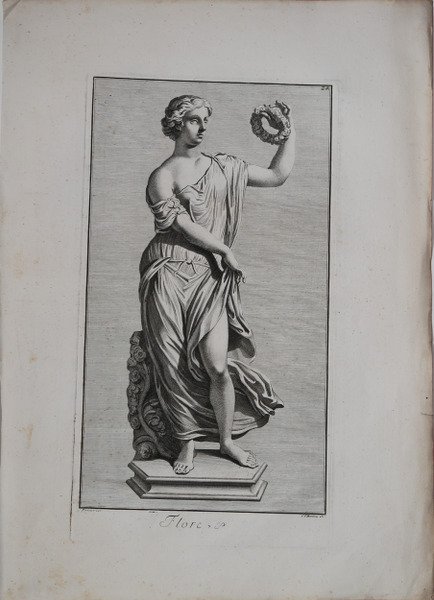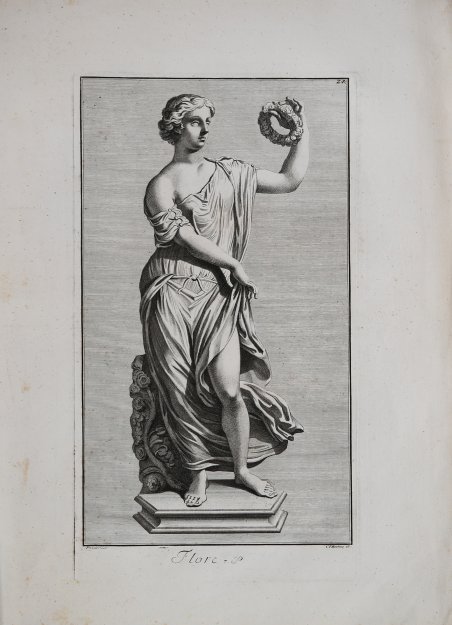Opera tratta da Recueil des marbres antiques qui se trouvent dans la Galerie du Roy de Pologne à Dresden avec privilege du roy, l'année 1733, pubblicata da Raymond Leplat a Dresda nel 1735. Il catalogo raccoglie, in 230 tavole, la Galleria scultorea, antica e moderna, e altri oggetti artistici posseduti dall’elettore di Sassonia, Federico Augusto I detto Augusto il Forte, morto proprio nel 1733. Il re aveva acquistato arte antica da Federico Guglielmo I di Prussia (compresa la collezione dei ritratti romani di Bellori) e dalle famiglie Chigi e Albani di Roma (sculture, vasi, bronzi e mummie). Sebbene il frontespizio rechi la data del 1733, le tavole recano date anche successive. (1734-1735). Manca un apparato di commento che indichi le provenienze dei pezzi e la maggior parte delle tavole recano solo una breve denominazione dei soggetti, prevalentemente mitologici, raffigurati. Quasi tutte le tavole sono firmate dagli disegnatori e dagli incisori. I disegnatori sono A.M. Wernerin, J. Preissler, M. Tuscher e H. Preissler. Gli incisori L. Zucchi, C.F. Boetius, G. Mart. Preissler, Johann Balthasar Probst, Bernigeroth, Johann David Hertz, Iac. Gottlieb Thelot, Iac. Andr. Fridrich, Christian Philipp Lindemann, Hieronymus Sperling, “MB”, Joh. Jac. Steltzer o Chr. Raym. Thoman. Acquaforte, in ottimo stato di conservazione. Plate from Recueil des marbres antiques qui se trouvent dans la Galerie du Roy de Pologne à Dresden […], published in Dresden by Raymond Le Plat, in 1735. The collection of ancient and modern art at Dresden had been established by Friedrich August I (“Augustus the Strong”), who died in the same year as this book was published. He had bought antiquities from Frederick William I of Prussia (including the Bellori collection of Roman portraits) and from the Chigi and Albani families of Rome (including sculpture, vases, bronzes and mummies). Several Roman antiquities had arrived in Dresden as recently as 1729. The plates have no accompanying explanatory texts, but most are captioned. Subjects are chiefly mythological (the collection includes copies of some famous works, such as Praxiteles's “Satyr” and Scopas's “Maenad tearing a goat”). Almost all the plates are signed by draughtsmen and engravers. The draughtsmen were A.M. Wernerin, Joh. Justin Preissler, M. Tuscher or H. Preissler. The engravers were Lorenzo Zucchi, C.F. Boetius, Georg Mart. Preissler, Johann Balthasar Probst, Bernigeroth, Johann David Hertz, Iac. Gottlieb Thelot, Iac. Andr. Fridrich, Christian Philipp Lindemann, Hieronymus Sperling, “MB”, Joh. Jac. Steltzer or Chr. Raym. Thoman. Etching, in very good condition. Cfr.


Scopri come utilizzare
Scopri come utilizzare

